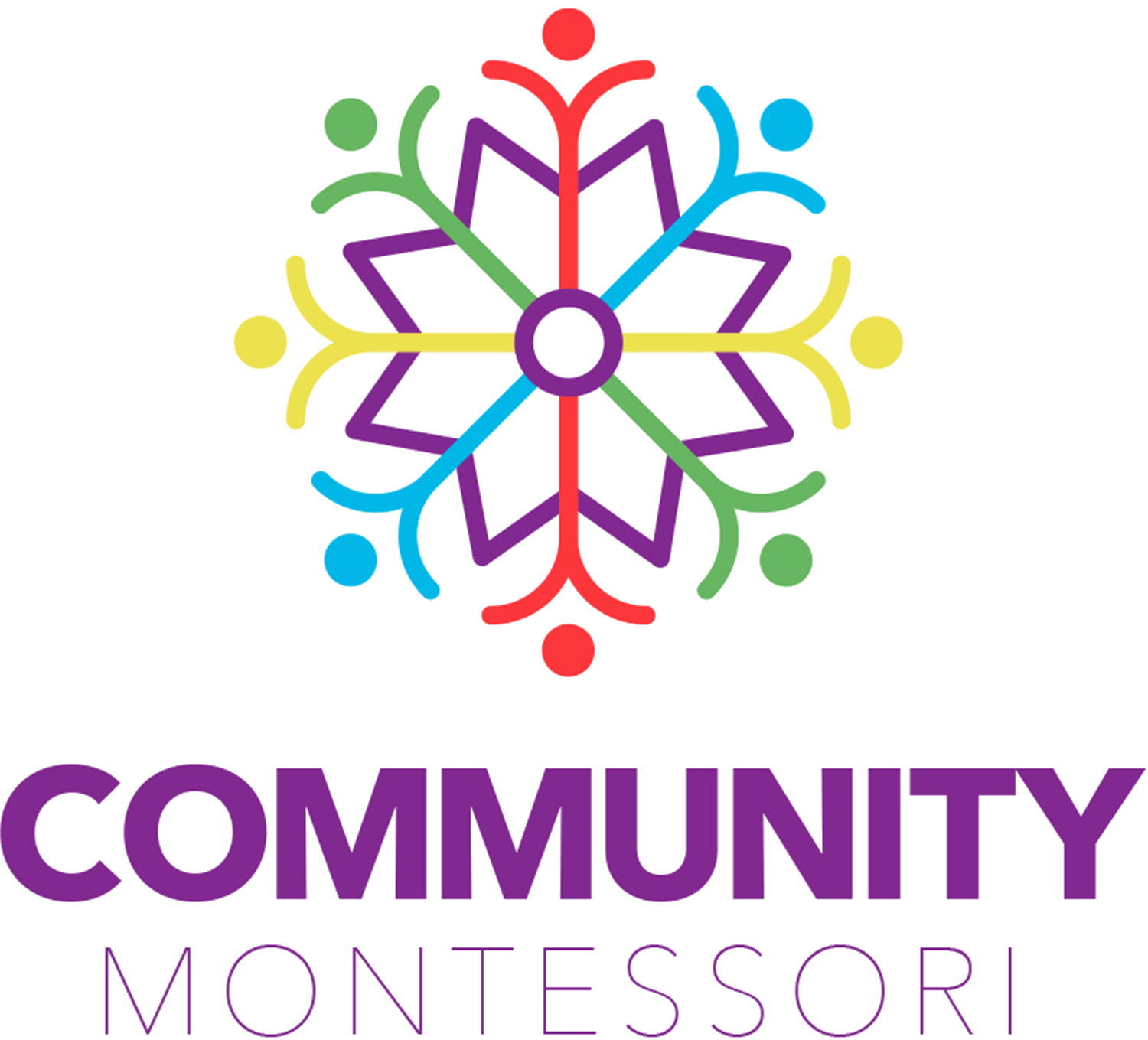
Community Montessori is led by teachers certified in Montessori Education. Dr. Maria Montessori’s philosophy on education is followed in all areas of the curriculum.
Community Montessori abides by the guidelines of the American Montessori Society and is working toward accreditation.
The fundamental characteristics of our classrooms include:
A basic principle of the Montessori philosophy is to “follow the child”. Our multi-aged classrooms allow the child the freedom to meet their own unique stage of development. They also encourage a nurturing environment where younger children learn from their older classmates and older children learn by teaching.
The child learns with a teacher for a 3-year period, which allows the teacher to get to know the child and understand his or her unique learning style. The teacher is then able to present new concepts at developmentally appropriate times, allowing the child to complete the work easily and joyfully.
The primary role of the teacher is not the transmission of information, but rather to nurture development and to guide activities, resources, and materials that allow the child to take the next step in learning. An environment of calm, order, and joy is created and maintained in each classroom. The teacher’s role is to tap into the child’s natural curiosity, encouraging the child to become self-motivated, independent, and a joyful learner.
Under the guidance of a teacher, children use interesting and enticing materials that help them explore, discover, and develop. During these years, they become independent and learn to care for themselves. Children develop respect for themselves, others, and their environment. They develop a work cycle in an environment created specifically for them with child-sized furniture and materials that are beautiful and enjoyable.
Children at this age are interested in everyday activities adults take part in such as sewing, folding clothes, setting a table, etc. These lessons develop order, independence, concentration, and coordination. Gradually, children lengthen the time they spend on a work, expanding their concentration. This area also develops muscles in the hand to prepare for writing.
Children learn discrimination using their senses. They categorize things such as color, size, texture, sound, and shape. This area lays the foundation for the math area.
Children enjoy counting and placing objects at this age. They use concrete materials to identify numerals, count, and position items to show quantity. Lessons are given sequentially, eventually moving into operations.
Children begin with pre-language activities such as rhyming, matching, sequencing, and opposites. They are introduced to sounds of the letters through games and materials, proceeding at their own pace. Children are also introduced to skills necessary for writing, reading, and spelling.
Children learn to work with globes and maps. They gradually learn the names of the continents and countries, as well as other information such as climate and products. Also introduced is common land formations.
Children are encouraged to create with joyful expression using imagination and a variety of media. The emphasis is on the creative process rather than the product.
Plant and animal kingdoms are studied to foster an appreciation for all living things.
Students in lower elementary are ready to ask BIG questions, which is why Dr. Maria Montessori called this part of her education model Cosmic Education. We tell the story of the beginning of the Universe, the formation of the earth, the timeline of life on earth, and the coming of humans.
The children learn about the story of numbers and math, and the story of language and writing. Each three-year cycle, we study the earth’s continents: the biomes, plants and animals, and the people and cultures. Children begin collaborating on presentations and research projects.
We focus on peace in ourselves and how it ripples out to create peace in the world. We practice mindfulness meditation, cooperative work, and care for our classroom. We learn to resolve conflict peacefully and to seek and create healthy and enriching relationships with ourselves, others, and the world around us.
As children continue in their Cosmic Education from lower elementary to upper elementary, they continue to study why and how the world works. This is an age of discovery, questions, and personal development.
We continue with interest grabbing, foundational lessons to aid in children’s ability to form their own perception of the world around them, beyond them, and their place within it. This is the stage where the children have the opportunity to internalize and gain further understanding of the Montessori lessons and materials they have been using since age three.
We focus on personal growth and accountability, cooperative learning and team building, and the foundational skills for each child’s success. The goal is to facilitate each child’s growth and learning, then to further facilitate them taking more and more responsibility for their learning – from planning field trips, to teaching others, to community service. It is a beautiful, joyful, and fulfilling process of awareness and growth.
The junior high program works to prepare adolescents to become self-confident and contributing members of their community as they grow into adulthood.
The students learn how to manage their time, become more independent, organize themselves, collaborate with others, exercise choice, develop leadership skills, grow respectful relationships, learn responsibility, and many other skills.
The students receive lessons in all of the core subjects: Language Arts, Math, Science, and Social Studies. Their lessons include teacher led and student led lessons, group discussions, group projects, individual projects, individual lessons, and many hands-on learning opportunities. The students are pushed to reach their academic potential, while still allowing for individual needs.
The students also learn through a variety of experiences in the community. They participate in community service, attend field experiences connected to the curriculum, enjoy local performing arts events, and participate in overnight trips. These experiences help young adults see their place in their community and how they can make that community better.